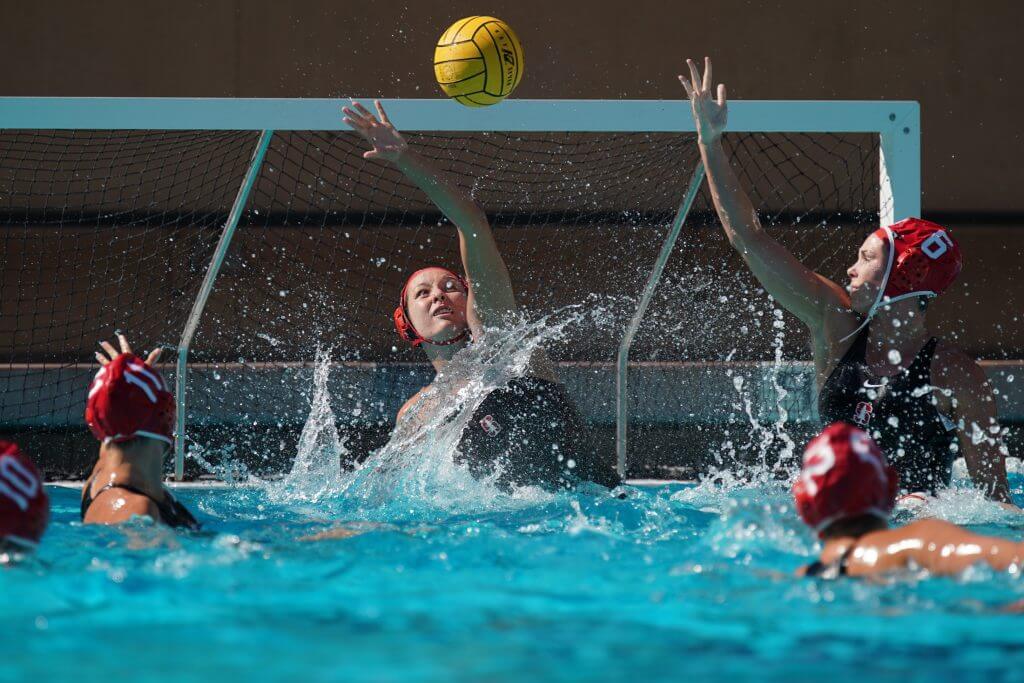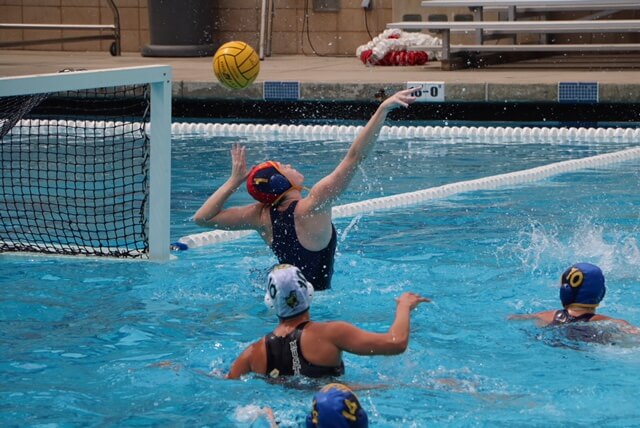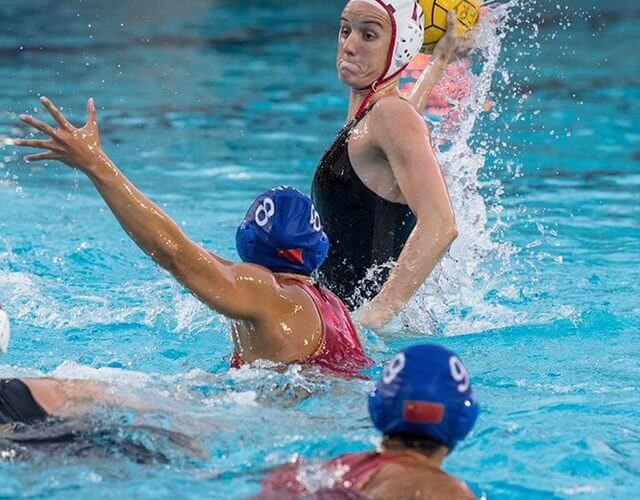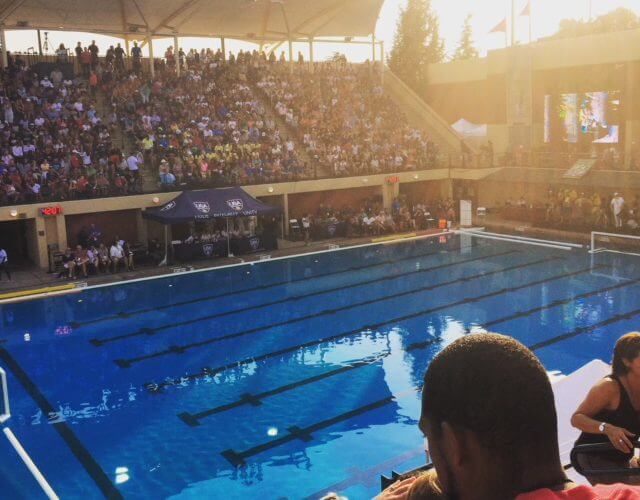Tips for Beating a Goalie, by a Goalie

By Rachel Andersen, Swimming World College Intern.
Finally – after what seems like hours waiting – your teammate passes you the ball. You get up on your legs and fake, fake, fake! There: An opening. You take the shot and…Blocked by the goalie again!
How does the goalie do that? How do they always seem to know where you are shooting?
Well, as a goalie, I’ve often had fellow teammates ask me the same question. How do I know where they are shooting next? The answer, unfortunately, isn’t simple and definitely cannot be conveyed in the few seconds before the next player takes their shot.
However, here are four ways players can improve their shooting habits to beat even the most seasoned of goalies.
1. Shot Variability

Photo Courtesy: Rachel Andersen
One of the easiest ways to predict a shot is knowing the player and the way they shoot. After playing with teammates for a few weeks, I know which players prefer right high corner shots and the players who depend on a weak side low skip. These habits make players easier to predict not only in practice but also during games.
This same concept applies to other teams as well. As water polo is such a small community, repeated play against the same teams is inevitable. This allows goalies repeated exposure to learn who on the opposing team has the best shots and what shots they use in a pinch.
What is the best way to combat this? Shot variability. Being conscious of your own habits as a shooter allows you to take into account the shots you find yourself circling back to and changing them up. How does this translate to practice? Taking a lot of different shots. Throw a lob into your routine every once in a while. Go near side even if you normally shoot far. Take a T shot when going one-on-one with the goalie. Taking more varied shots in practice allows you to become more comfortable with them. The more comfortable you are with a variety of shots, the more likely you will be to use them during even the most stressful moments of games. This will allow you to break away from whatever your “tried and true” shot is, making you much more difficult to predict.
2. Believability of Fake

Photo Courtesy: Stanford Women’s Water Polo, @stanfordh2opolo
As a goalie, I’ve seen my fair share of fakes. Most of them, unfortunately for the player but fortunately for me, are not very good. A bad fake allows the goalie to rest their legs as they know you’re not shooting yet. A good fake forces the goalie to pay attention and wears out their legs as they jump and track each faux shot.
A good fake usually has two qualities: shoulder movement and high legs.
A fake without shoulder movement is just a player waving the ball around with their arm. As the shoulder isn’t part of the movement to provide the shot power or direction, these fakes are easy to spot and easy to recognizes as dupes.
Similarly, fakes from low in the water are easy to identify. Most players shoot from a higher position, so when they fake low in the water then rise up for the real shot, goalies can easily anticipate exactly when the shot is coming. By faking high in the water, the goalie must remain on guard, lest a shot come when their legs aren’t set.
3. Optimizing Shooting Angle
Players can sometimes unintentionally make their shot easier to block by moving into worse shooting angles. Shots from bad angles would include shots coming from the one or five position. In shooting from the angles, the goalie is able to set themselves in front of the near post, forcing a shot to either come directly at them or cross cage where they are anticipating.
In shifting your position so that you are more central to the cage, you will open up more shots and force the goalie to consider more than one type of shot.
4. Confidence

Photo Courtesy: Rachel Andersen
More often than not, amazing players shy away from shots. As a goalie, this is both to my advantage but also my detriment. On the one hand, fewer shots means less work for the goalie. However, it is greatly frustrating to see your own teammates, whose shots are amazing, pass the ball away to someone else when they were in the perfect position to make a goal.
As the saying goes, you miss every shot you don’t take. While this works out in the goalie’s favor, it doesn’t help you as the shooter to grow as a player. So take all the shots you can. The goalie can’t block everything. You have a better shot than you might think.
Your goalie probably thinks so, at least. And if not, they might have some pointer to help you beat out the enemy.
-All commentaries are the opinion of the author and do not necessarily reflect the views of Swimming World Magazine nor its staff.




Great perspective! Sharing with my team.
Another great article. Keep up the excellent work.
Great article Rachel.